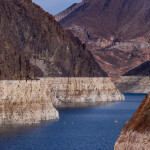On February 17, 2012, an article in the Shanghai Daily reported that 40 percent of China’s rivers are seriously polluted, two thirds of Chinese cities are “water needy,” 300 million people in rural areas lack access to drinking water, and 20 percent of rivers are too toxic to even touch. In response, it continued, the State Council unveiled a guideline to cap the maximum volume of water use at 700 billion cubic meters by the end of 2030 and tighten its supervision over exploitation of underground water and other sources of drinking water.
Afghanistan
August 21, 2021
Pundits have been comparing the “fall” of Kabul to Saigon. The pandemonium is certainly similar. But today the Vietnamese work very hard for their living, just as they did during the war. About three-quarters of them live in country areas and villages growing rice and fruit trees or raising livestock. More importantly –as far as is publicly known- there are no mass executions. Perhaps 50 years from now –if humanity is still around- the current animosity in Afghanistan will have subsided and people will be living their lives out more or less normally.
The Vietnam fiasco did not have consequences in terms of the propagation of communism; in fact, the Soviet Union disintegrated in 1989, and China subsequently adopted many capitalist reforms that propelled it to the growing powerhouse it is today. These events were unthinkable as American helicopters lifted desperate people out of Saigon’s embassy rooftop in 1975.
The similarities between Saigon and Kabul are misleading, coincidental and superficial. Nixon ended the Vietnam war primarily because the American people did not support it and Congress refused to continue paying for it. Today the geopolitical reality stemming from the unprecedented, meteoric rise of China’s economic and military might is an entirely different matter. The quality, quantity, efficiency, and technological sophistication of its navy and air force continue to grow in leaps and bounds, and so is their nuclear arsenal.
Viewed in that context America’s departure from Afghanistan is reminiscent of Rome’s futile withdrawal from Britannia around 410, to help fend off the barbarians who had crossed the Rhine in the winter of 406-407. It still didn’t prevent the Empire’s demise 66 years later, in 476. From a military perspective Afghanistan, a landlocked country, is a dead-end mousetrap consuming lives and vast economic resources that could be advantageously redeployed elsewhere. It is surrounded by nations hostile to the U.S. –Iran to the west, Turkmenistan, Uzbekistan and Tajikistan (former Soviet Republics) to the north, China to the east, and Pakistan (a dubious American ally) to the south and southwest.
In short, the preemptive but ominous withdrawal from Afghanistan, a course of action on which former President Trump and President Biden agree, makes sense. The U.S. and China are squaring off, among other things, over the South China Sea and Taiwan, and no one knows how that’s going to play out.
Security and Logic
July 4, 2021
Background
A long-awaited, unclassified Preliminary Assessment of Unidentified Aerial Phenomena issued by the Office of the Director of National Intelligence is an unexpected silver lining to the Covid-19 pandemic: The $2.3 trillion relief bill signed by then-President Donald Trump actually required the Pentagon to continue investigating UAPs and release its findings to the public. Worldwide sightings by reputable and plentiful eyewitnesses abound. The good news is that now there’s a required-by-law disclosure mechanism in place akin to the White House Press Secretary’s regular briefings. The bad news is that this first report admits that a significant portion of these sightings do not conform to current U.S. technology. The objects are able to accelerate instantly at speeds in excess of anything we’re capable of, change directions suddenly, impervious to g-forces that should rip them apart, and dive into the ocean and emerge flying at such speeds. Among other things, these observations suggest an intelligence able to make gravity at will, and by extension, gravitational shields that make them invulnerable to anything we have. To put that in perspective, we are of course aware of gravity, but we don’t even know what it is. The report leaves open the possibility that some of the events may be attributable to “technologies deployed by China, Russia, another nation, or a non-governmental entity.” That begs the question, if that is so, why are they investing so heavily on comparatively primitive systems like hypersonic missiles?
The Problem
The intelligence community’s thunderous silence on the subject is not reassuring. If anything, it tacitly admits that we are at the mercy of a superior intelligence. That of course opens the door to security concerns that transcend anything humanity has ever experienced, at least not in recorded history: the possibility of extraterrestrial invasion, enslavement, or even outright extermination. Long ago Carl Sagan said that “extraordinary claims require for validation extraordinary evidence.” This UAP report is that evidence.
Despite unparalleled ongoing and worsening tensions and disputes, emergency links exist between Russia and the U.S., and presumably with China, to avoid thermonuclear war. The possibility of extraterrestrial invasion by beings with vastly superior technological knowhow should not be ignored. Accordingly, if an agreement, even in principle, does not exist to instantly activate a (currently dormant) planetary command, then the great powers should give it the priority it deserves. No one knows if other less-benign extraterrestrials are on the way.
Megadrought
- Water crisis
- Ogallala Aquifer
- Lake Mead – Historic Low
- Lake Oroville, CA
- Dry reservoir
- Dust storm
- Vineyard destroyed
- Heat dome Pacific NW
- Edge of abyss
Click any image to expand
A Questionable Strategy
June 12, 2021
Historical Background
When they “opened” China in 1972 President Richard Nixon and Secretary of State Henry Kissinger did not anticipate the consequences that would follow. Nixon’s primary motive was to take advantage of the then adversarial Sino-Soviet relationship to open another front in the Cold War with the Soviet Union. Declassified documents published by the National Security Archive and the George Washington University’s Cold War Group of the Elliott School of International Affairs reveal that agreement on Taiwan was absolutely necessary for diplomatic normalization. Indeed, nearly 9 pages of the 46-page record of the First Zhou-Kissinger meeting on July 9, 1971 show that Kissinger disavowed Taiwanese independence and committed to withdraw two-thirds of U.S. military forces from the island once the Vietnam War ended. However, Nixon’s resignation and Ford’s political weakness precluded conclusion of the normalization process. Chairman Mao also was interested in a rapprochement with the U.S. for the very same reason Nixon was –a counter to China’s dangerous confrontation with the Soviets. Near the end of Nixon’s trip to China February 21-28, 1972, the two governments issued what is known as the Shanghai Communiqué. In it the United States declared that it “acknowledges that all Chinese on either side of the Taiwan Strait maintain that there is but one China and that Taiwan is a part of China.” Furthermore, Nixon stated that the United States did not support Taiwanese independence.
Trade between the two countries started to grow in earnest after 2000, when Congress voted to grant China “permanent normal trade relations,” which paved the way for China’s accession to the World Trade Organization in 2001. Since then the Chinese economy has grown exponentially. Now it’s the world’s second largest economy, by some estimates on track to overtake the U.S. by 2030 or earlier.
A Questionable Strategy
The Trump Administration’s strategy was geared to create conditions to slow down, halt, and (hopefully) reverse China’s economic growth. It erected tariffs, ousted prominent Chinese high-tech firms from the American market, and delivered de facto ultimatums to other countries telling them, in no uncertain terms, to do the same. Now the Biden Administration seems to be following the script. So far these efforts have been unsuccessful. The International Monetary Fund (IMF) estimates China’s economy will grow by 8.2% in 2021 and the U.S. by 3.1%, and in 2020 our trade deficit actually rose 17.7 % to $679 billion, highest since 2008. As for America’s efforts to persuade other countries to –in effect- boycott China, there are at least three fundamental reasons why this too is likely to be, to say the least, difficult. Firstly, China is already the number one or number two trading partner with most of the world, including NATO members (it recently became France’s largest customer of cosmetics, surpassing Germany and the U.S.). Secondly, embargoes and tariffs are only going to encourage China even more to redouble its efforts to become self-sufficient in high tech and other critical fields, increase domestic consumption to reduce the role of exports as its primary engine of growth, and open its economy further to attract even more foreign investors eager to sell to its vast pool of increasingly wealthy consumers. Thirdly, and more ominously, President Xi made it clear that while he hopes to reunify Taiwan with China peacefully and even outlined a five-point proposal to do so, he also stated that “we make no promise to renounce the use of force and reserve the option of taking all necessary means.” Accordingly, they have engaged us in an arms race that, given the size of our existing debt and the uncontestable need for long-term massive investment here at home, is simply unsustainable. This begs the question, if this strategy of confrontation fails to deliver, is there a peaceful Plan B waiting to replace it?
Sobering Facts
Higher Education
The United States is trying to preserve the dwindling technological advantage it enjoyed since the end of World War II, but it doesn’t bode well. There’s a high-tech STEM (science, technology, engineering and mathematics) crisis: foreign-born non-citizens currently account for 81% of electrical engineering majors and graduate students in the U.S.; and in computer science –critical for innovation and research in fields such as cyber and artificial intelligence, American-born students make up just 21% of the student body. Furthermore, this is not an aberration. According to the World Economic Forum, in 2016 China had at least 4.7 million native-born recent STEM graduates, followed by India with 2.6 million. In contrast, the U.S. only had 568,000, and of those, half were foreign-born. In addition, although China’s total population is four times larger than the U.S., it has eight times as many native-born STEM graduates. Other estimates see Chinese graduates aged 25 to 34 rising 300 percent by 2030 compared to just 30 percent in the U.S. and Europe. The numbers speak for themselves.
Student Debt
According to the College Board, over the past 30 years the average cost to attend a public four-year institution has more than tripled, and at private four-year schools it more than doubled. This documented trend far outpaced the incomes of the lower and middle-classes. As a result –according to the Federal Reserve Bank of New York- about 54% of all American students take out loans to pay for college. Their average debt topped $37,500 in 2020, and collectively they now owe $1.6 trillion. Based on the current rate of growth, by some estimates student loan debt will reach $2 trillion by 2024. For students, paying off student loans as soon as possible after graduation is a fundamental priority. Unlike mortgages, which can be extinguished in foreclosure, and credit card loans, which are dischargeable in bankruptcy, student loans are not. Students that are unable to pay the loans back for any reason are haunted by collectors for life and their credit scores depressed. This state of affairs strongly encourages youngsters to choose careers with the highest possible rates of compensation, and STEM-related are not at the top of the list. Employment in them is limited and neither guaranteed nor widespread, and more lucrative options are widely available. That is detrimental to the national interest. It all but ensures that in just a few years we’ll find ourselves lagging further and further behind China and India, a prescription for irrelevance.
Military Aspects
According to the U.S. Department of Defense’s 2020 Annual Report to Congress about military and security developments in China, the latter is for practical purposes mobilizing “all relevant aspects of its society and economy for use in competition and war.” The report further warns that “China has already achieved parity with –or even exceeded- the United States in several military modernization areas, including (a) shipbuilding (it already has the largest navy in the world, currently with 350 ships and submarines including over 130 major surface combatants; in comparison, the U.S. Navy’s total battle force is approximately 293 ships as of early 2020. In addition, China is the top ship-building nation in the world by tonnage and is increasing both its production capacity and capability for all naval classes); (b) land-based conventional ballistic and cruise missiles, and (c) integrated air defense systems. On June 2, 2012, at the Shangri-La Dialogue in Singapore, then Secretary of Defense Leon Panetta disclosed that “by 2020 the Navy will redeploy its forces from today’s roughly 50/50 percent split between the Pacific and the Atlantic to about a 60/40 split between those oceans.” If Secretary Panetta’s ratio still applies as of this writing, the U.S. has approximately 176 ships in the Pacific. That amounts to just 50% of China’s current (and growing) fleet, deployed mostly near its protective home-based missile umbrella. In view of these facts and given the rate of Chinese shipbuilding is it reasonable to expect that the U.S. Navy will be able to overpower its Chinese counterpart 10,000 miles away just a few years from now?
Innovative Thinking is in Order
Presidents Eisenhower, Kennedy and Reagan as well as the Bulletin of Concerned Scientists have repeatedly warned us about the consequences of nuclear war. Clearly it’s not lack of awareness but that they lacked –and lack- the power to abolish them. One wonders, who does, and might fear of a new world order beyond their control be behind this?
When Winston Churchill replaced coal with oil for the Royal Navy he also transformed it into a strategic commodity. Ever since then direct or indirect control of the world’s deposits has been a bone of contention among the industrialized powers. When the U.S. embargoed Japan’s oil supplies, the latter, in desperation, attacked Pearl Harbor to destroy the American Fleet which they perceived as a threat, and invaded the (then) Dutch East Indies to get the oil it needed to run its economy. Similarly, Hitler, blockaded by the Royal Navy (with U.S. help), and afraid of a possible future Soviet embargo of indispensable raw materials, including oil, attacked the latter. We all know the result, no point in counting the dead. There are two things we as a species must learn from this –if we want to survive. The first is that the devastation of World War II would be nothing more than a dress rehearsal if it were to be repeated with today’s (and future) weapons. The second is that the bone of contention must be replaced with a non-polluting, universally and easily available energy carrier that cannot be controlled or hoarded by any one nation or group of nations: hydrogen. More explicitly, we must trade all fossil fuels, including oil and the wealth derived from them, for survival. It’s as simple as that. The technology to do so exists, and climate change is firmly and relentlessly nudging us in that direction. We just need to heed.
Update – May 2021
May 23, 2021
A Strategic Commodity
Winston Churchill’s decision to replace coal by oil for the primary source of power of the Royal Navy forced Britain, which at the time had no known domestic oil fields, to seek, acquire and maintain control of oil deposits in distant lands. On May 21, 1901 the Shah of Persia signed the first oil concession agreement of the 20th Century bestowing upon an Englishman called William Knox D’Arcy a special and exclusive privilege to search for, obtain, exploit, carry away and sell natural gas, petroleum, asphalt and ozerite throughout the whole extent of the Persian Empire for a period of sixty years. In 1908 oil was discovered at Masjid I-Suleiman in southern Persia, and within a year the Anglo-Persian Oil Company (APOC) was formed. Six years later, on June 14, 1914, at Churchill’s behest -and coincidentally just fourteen days before the assassination of Archduke Franz Ferdinand of Austria that sparked World War I- Parliament passed a bill to fund the British Government’s acquisition of a 51% interest in APOC. Thereafter Churchill promptly placed two directors on its board and negotiated a secret contract to provide Britain with a 20-year supply of oil under favorable terms. Thus, with one stroke, Churchill promoted oil to a strategic commodity and an instrument of national policy. While this British monopoly (and later, American and Russian) of the world’s oil fields amassed immense wealth for them, it also created a suffocating dependence for the (then) up and coming German and Japanese Empires that led to World War II.
Worth noting is that China, then hibernating, did not compete in the struggle for control of foreign oil deposits. Now the Asian giant –with a population four times larger than the United States- has awakened, become wealthy and powerful, and ominously served notice that it is intent on reclaiming Taiwan, which it sees as Chinese territory, and on monopolizing whatever fossil fuels may be found in the South China Sea –in its eyes a non-negotiable imperative to ensure oil self-sufficiency for its navy. In other words, the dynamics that existed in 1914 and 1941 never subsided; this time around they’re enhanced by weapons capable of ending life as we know it in a matter of minutes. There is however a sliver of hope: the universal understanding that fossil fuels, including oil, are the cause of climate change. Either we abolish their use or they will abolish us.
Clarification
As to the purpose and intent of this website, both are disclosed in the “About Us” page. Equally important, this is not a “for profit” enterprise catering to special interests; rather, we simply seek to leave a better world for our children and grandchildren.
Though not one of our collaborators is a polymath, we all face impending anthropomorphic catastrophes encompassing nearly every known discipline. Our technology, which continues to evolve at a breathtaking speed, has far outpaced our level of spiritual maturity. Artificial intelligence, quantum computing, and robotics –to name three- now threaten to wrest any vestigial control we may still have over terminal weaponry, and primitive traits like dominance, greed and lust for power still call the shots.
Anthropomorphic climate change is impervious to our needs and wants; its ramifications reach into every aspect of human endeavor –economic, psychological, military, social, and directly impacts the availability of water, energy and food, and population growth. In response, we have attempted to amass a kernel of pertinent, cutting-edge knowledge as reported by renowned specialists, and used it to suggest an original, non-permanent structural blueprint to restrain our aforementioned traits from destroying us all.
We believe hydrogen is the answer. If mass produced by electrolysis of seawater using solar energy primarily, it could be burned to create a new source of pure water to conquer drought, compensate for the depletion of aquifers and melting glaciers, ensure the production of food, and make it possible to plant trees anywhere, even in the driest deserts, to help recycle the carbon dioxide already in the atmosphere. Crucially, unlike desalination, which is impractical or impossible in inland areas and a heavy consumer of energy, our suggested system would also generate electricity, not just by burning the hydrogen itself but by using gravity as shown on the front page diagram. Fusion, on the other hand, transforms hydrogen into helium. Inevitably, in time, with future and cumulative demand stemming from technologies and schemes not yet invented, our supply of water would permanently and irretrievably decline.
New Technologies and Discoveries
Great progress has been, and continues to be made, at every critical technological junction to make this feasible and economical. The price of solar panels declined about 80% from 2000 to 2020 (there’s no reason why residential consumers must be compelled to remain attached to the grid other than to continue to subsidize public utilities, which burn fossil fuels), a catalyst was discovered that minimizes the production of chlorine gas while producing hydrogen by electrolysis of salt water, numerous corrosion resistant materials for bipolar plates are being tested, and, crucially, a turbine capable of burning hydrogen directly and uninterruptedly, without fuel cells, already exists.
What’s Missing
While undoubtedly brilliant, these projects exist in a vacuum, isolated from each other: they’re not part of an all-encompassing team dedicated to replace fossil fuels with hydrogen. One way to compensate for that shortfall would be to amalgam a group of grassroots volunteer experts in the many disciplines involved to develop and publicize a comprehensive, technically-detailed blueprint that our political leaders would be hard-pressed to ignore.
Climate Change and Nuclear War Revisited
April 29, 2021
Background
On April 19, 2021, at a press conference about climate change, the Secretary-General of the United Nations, António Guterres said that “we are on the verge of the abyss.” The evidence supporting his conclusion is overwhelming. Increasingly severe storms, droughts, wild fires, rising seas, and mass extinction of thousands of species are already taking place. The good news is that most, if not all world leaders agree that our species must come together immediately to tackle this relentless threat. The bad news is that what they say they’re willing to do is simply not enough.
Reality
Let’s put things in perspective. Like slow-moving magma, climate change threatens to destroy the world as we know it over a period of decades. In contrast, the threat of nuclear war resembles a category 30 hurricane. Indeed, the danger of war with Russia, China, Iran and North Korea is higher than ever. NATO’s slow-motion expansion to the Ukraine, an existential threat to Moscow, predictably led to Russia’s annexation of the Crimea, Sebastopol, and its military facilities. China, a civilization thousands of years old and a great power over the centuries and in different epochs, is in the process of reasserting its heritage. In its eyes, that includes, as a matter of right, an Anschluss with Taiwan, ownership of much of the South China Sea, and premier technological prowess. Meanwhile, Iran’s nuclear program, if consummated into nuclear weapons and ICBMs, would challenge America’s dominance over the Persian Gulf’s oil resources and threaten the very existence of Israel, its arch foe. In this case the issue is whether Iran can permanently rather than temporarily be prevented from acquiring nuclear weapons and ICBMs. In addition, other simmering, unresolved conflicts such as between China and India and India and Pakistan, all nuclear armed and with a history of wars between them, could at any time flare up into all-out wars. At a minimum, either conflict would likely cause a nuclear winter and destroy civilization as we know it. Obviously then, it is nothing short of a preposterous fantasy to believe that a unified global response to climate change led by China and the U.S., the largest emitters of greenhouse gases, can be compartmentalized in the absence of an agreed-upon permanent structural framework that prevents anyone from seeking to forcibly dominate the world now or in the future. Fortunately it is not impossible.
A Blessing in Disguise
Our technological knowhow has far outstripped our spiritual maturity. Our quest for dominance, to have others do unpleasant, back-breaking, poorly-paid work so we and our descendants can indefinitely live privileged lives, in no way differs from what the Sea Peoples, Genghis Khan, Rome, the Mayans, and many other war faring civilizations did. The difference is that they did not have the means to destroy the world; we do. In that sense climate change could be a much needed catalyst to bind and contain that trait. For example, humanity might create a system based on a universal currency, possibly Special Drawing Rights (SDRs) for all nations based on their per capita contribution to the production of green hydrogen from seawater, rather than on military prowess. Countries with abundant capital but with limited sunshine could invest in countries with abundant sunshine and seawater but with limited capital. Thus, an agreed-upon universal formula would allocate SDRs to each country. The hydrogen would be used to generate electricity and to power vehicles; it would also create a new source of pure water to relieve over-stressed aquifers and disappearing glaciers, fight desertification, plant trees and crops, and reduce the amount of carbon dioxide already in the atmosphere. More importantly, it would preempt companies with the rights to high-tech means of energy generation such as cold fusion, anti-gravity, anti-matter, from forming cartels akin to today’s OPEC.
Deeds, not Words
This suggestion would reveal the true desire for cooperation and commitment by all nations to halt the rapidly worsening effects of climate change, eliminate disputes over control over the world’s energy supplies, create a framework for equal purchasing power, and greatly reduce the ability (and reason) of all nations to spend untold amounts of money on weapons and war.














